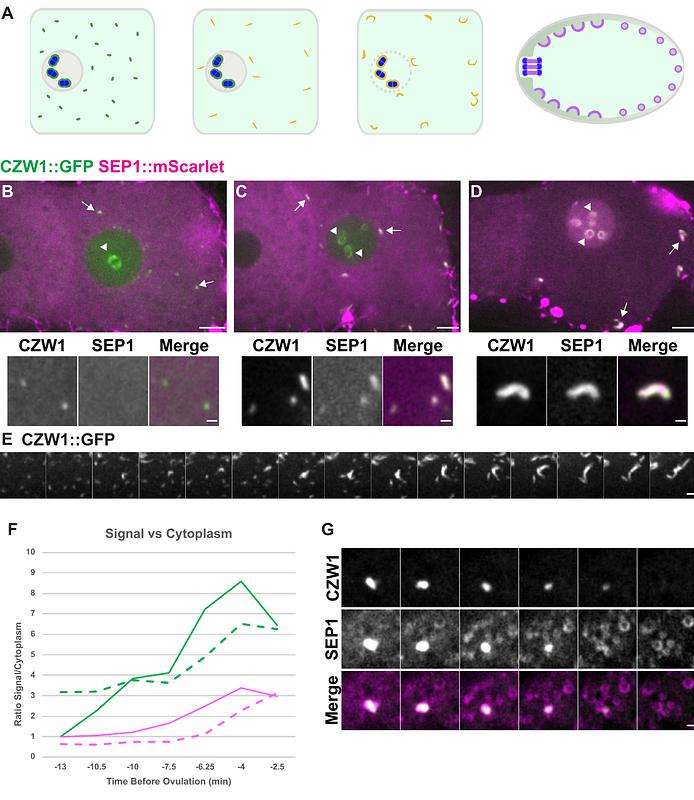Outer Kinetochore Proteins form Linear Elements to Regulate Vesicle Transport

Outer Kinetochore Proteins form Linear Elements to Regulate Vesicle Transport
Kowaleski, S. J.; Bridgewater, A.; Saraceno, C.; Dudek, M.; Pelisch, F.; Bembenek, J.
AbstractDuring cell division, several key regulators of chromosome segregation play additional roles during vesicle trafficking required for cytokinesis. During anaphase I in C. elegans oocytes, chromosome segregation is coordinated with vesicle trafficking to support polar body extrusion and exocytosis of extracellular matrix material. Prior to anaphase, numerous outer kinetochore proteins localize to mysterious linear element structures throughout the cortex in addition to chromosomes, which has been observed in oocytes of multiple species. Linear elements initially form as puncta just before nuclear envelope breakdown and rapidly assemble into larger elongated structures. As linear elements grow, they form large clusters with secretory vesicles, initiating an elaborate transport mechanism that distributes vesicles throughout the cortex by anaphase I. Linear elements dynamically interact with microtubules and endoplasmic reticulum during this process. Microtubules are required for linear element assembly, motility, and clustering with vesicles. Knockdown of a plus end microtubule binding kinetochore component also inhibits linear element growth and vesicle clustering, but not the motility of linear element puncta. Depletion of several outer kinetochore proteins causes defects in extracellular matrix formation. Therefore, linear elements facilitate the microtubule-dependent transport of vesicles for their proper distribution in the cortex. We hypothesize that outer kinetochore complexes coordinate movements of chromosomes and cytoplasmic membranes to enhance the fidelity of cell division.